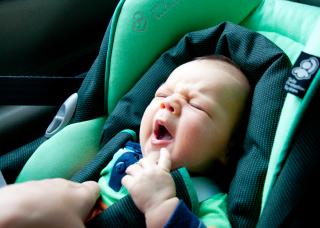Traveling with your kids is a great experience, but car seat safety is one of the most vital responsibilities you have as a parent in keeping them safe.
Here are a few things you need to know about securing your child safely and properly in a car.
Don’t Get a Used Car Seat with an Unknown History
You need to make sure you have the instructions for the car seat, a label with the manufacture date and model number to ensure it hasn’t been recalled, and you need to know for sure that it isn’t expired or more than 6 years old and has never been in a moderate or major crash and has unseen damages or your child may not be fully protected.
Buckle up Properly Every Time
No matter what car seat safety stage your child is in, use it every single time no matter how short your trip is going to be. Major accidents can happen in a split second on a sunny day right in your neighborhood or around the corner.
Know the 4 Car Seat Safety Stages for Your Child
How your child should be secured when riding in a vehicle is determined by their age, height and weight. These are the commonly-suggested stages, as laid forth by the CDC in the United States, as of December 2014.
-
Age 0-2: Rear-facing car seat
0-2 year olds should be in the back seat facing the rear, until they are at least 2 years old or they reach the upper weight or height limits as described in the owner’s manual of their particular seat.
-
Age 2-5 (at least): Forward-facing car seat
When your child outgrows the limits of the rear-facing seat as described in the owner’s manual of the seat, they should remain in the back seat of the car, but facing forward now, until they are at least 5 years old, or they reach the upper weight or height limits as described by the manufacturer of their particular seat.
-
Age 5 until Seat Belts fit properly: Booster seat
When your child reaches the upper weight or height limits as described by the manufacturer of their car seat, they should be put in a booster seat in the back seat that puts them in a proper buckling position with the car’s seat belts – shoulder belt across the chest, not the neck, and lap belt across the upper thighs and not the stomach.
-
When Seat Belts Fit Properly: Seat Belt in the backseat
The safest place for children is still the back seat, but once the belts fit properly (with the shoulder belt across the chest and not the neck, and lap belt across the upper thighs and not the stomach), they can sit in the regular backseat with the car’s seatbelt. Proper seat belt measurement is generally considered 57 inches (4’9”) tall, but make sure this is the case for your child to have a proper fitting belt and that the belts are laying as they should.
Put the Car Seat in the Right Place
If you have only one car seat to deal with, the safest place in a vehicle is the middle of the backseat. That way it is better protected from impact on either side, front and back. If you must put the car seat in a vehicle with only a front seat (such as a truck), disable the airbags, as they can cause serious or fatal injuries. Don’t ever put a rear-facing car seat in front of an air bag.


